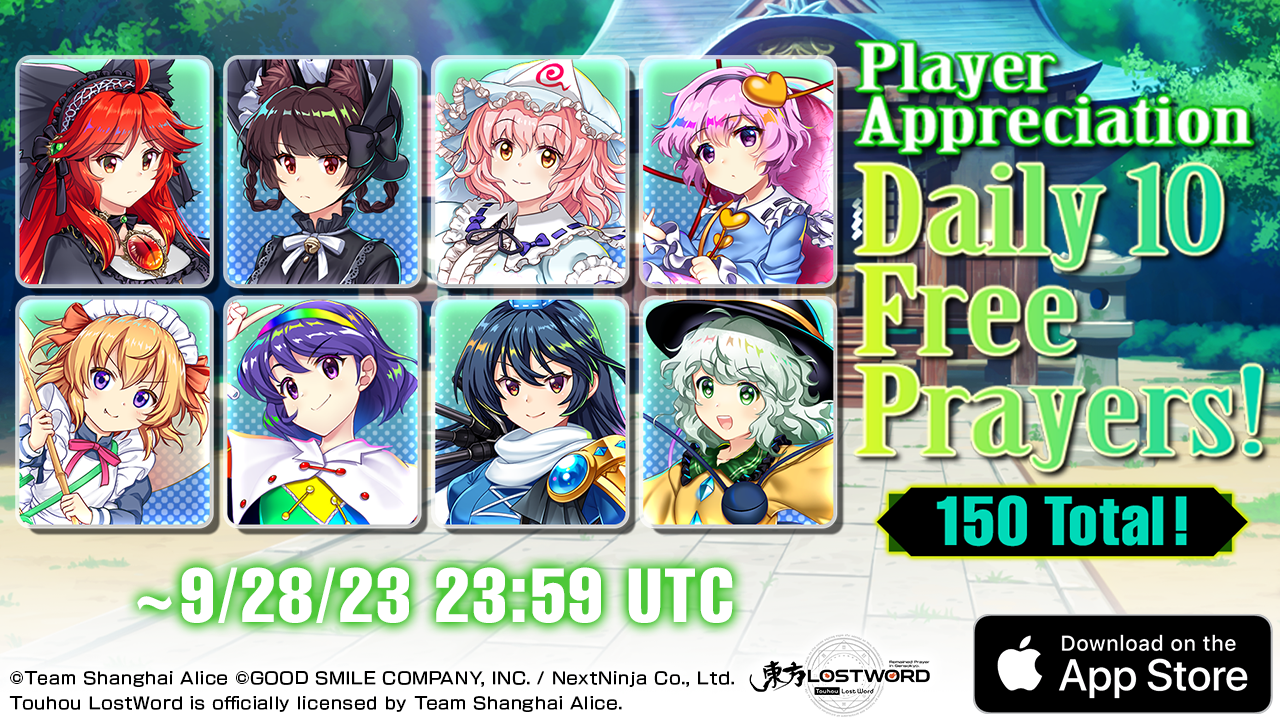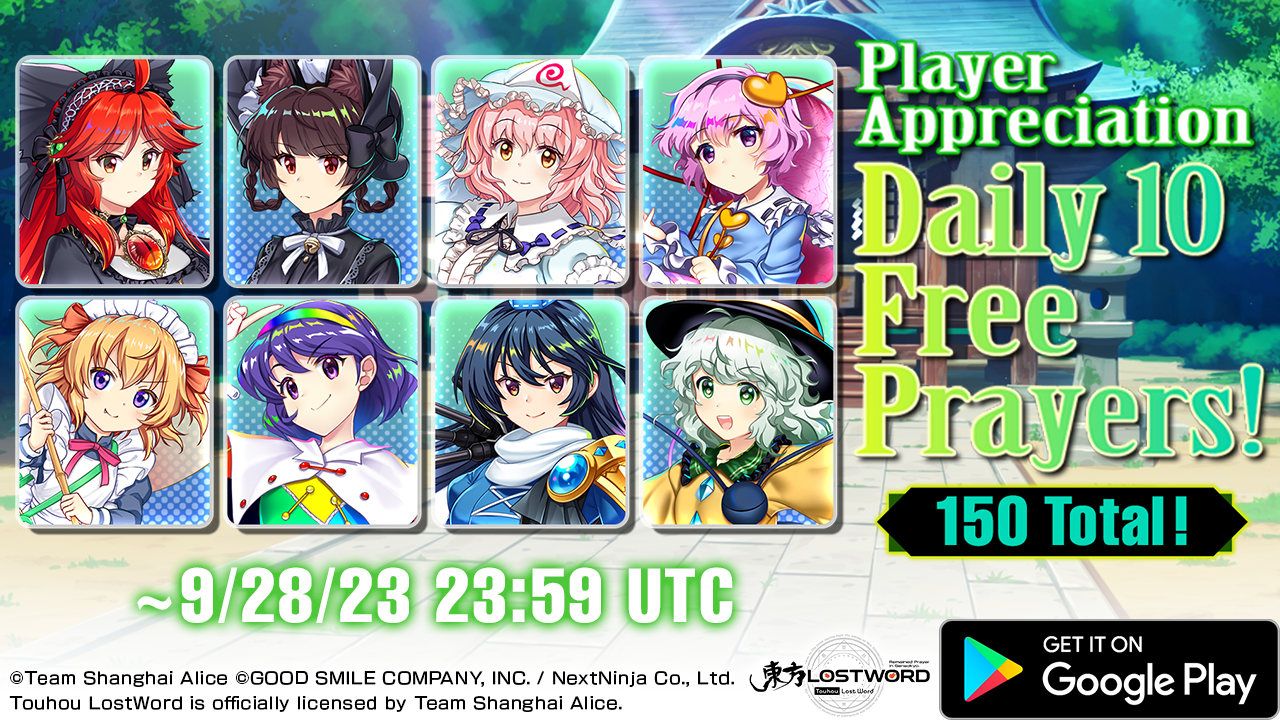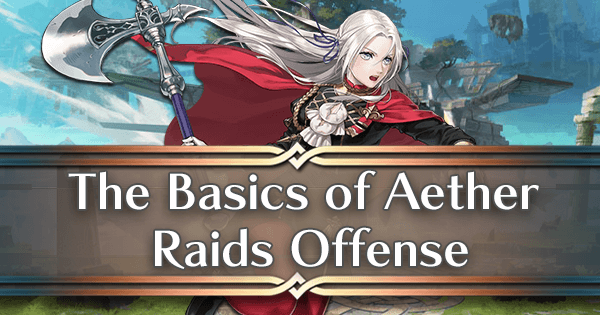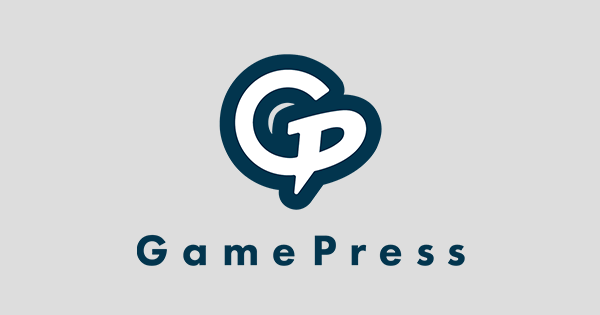Introduction

Many different strategies can work well in the early stages of Aether Raids, which meant that you can bring pretty much anything without getting severely punished. However, as players climb higher in the tiers, they will find more sophisticated defenses geared toward punishing players with an unoptimized strategy.
Furthermore, due to the blessing system and bonus rotation to obtain a higher lift gain per battle, even though there are 5 units in an Aether Raids team (6 if you run the new Mythic effect), there are further restrictions to how the team could be built. If the Mythic is not a bonus unit, the worst-case scenario is that a player will only have 2 free slots for a team with 2 Mythics. This meant that the number of strategies that are viable for maximum scoring could be potentially reduced depending on the bonus units on rotation, and the Mythics that are used.
Due to the above restrictions, optimized strategies usually only require 2 to 3 units, with the remaining team slots being filled up by the Mythics and the bonus units. Some strategies take it 1 step further by only relying on a single unit, with 1 more unit that is used for supportive purposes. The support unit could provide a variety of things, be it inflicting statuses such as Panic, extra turns by dancing, or just provide extra stats for the main unit.
In this guide, we will focus on some of these optimized strategies. We will also discuss the viability of different offensive structures.
Pure Enemy Phase
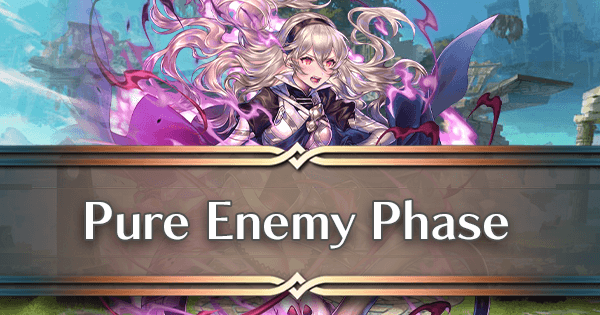
The pure enemy phase strategy (sometimes known as superunit or omega-tanking) is a self-explanatory strategy; buff a single unit as much as possible, choose a good spot to enemy phase the whole team, and hope that your unit survives the ordeal.
Most super-units are usually melee ranged due to having more stats to work with. However, ranged units also have the advantage of potentially taking out 1 unit before taking everyone else on the enemy phase. This is usually accompanied by a dancer.
A support unit that potentially provide more stats or utility to the main unit is also common in teams that utilize such strategies.
Potential Issues:
- The strategy falls apart if the main unit is taken out.
- The strategy requires your main unit to be as strong as possible. This could mean having high amount of merges, premium skills or both.
- At the mercy of the opponent; some Aether Keeps could be difficult for your main unit due to possibly effective damage, triangle advantages, or simply sheer firepower.
Main Unit Examples
Hit And Run
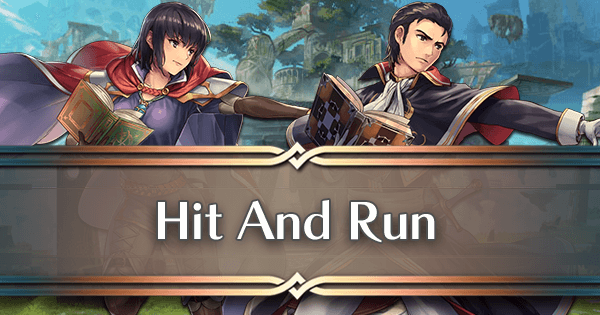
In Aether Raids, the defense team only starts moving when either the attacker is in range, or an attack is initiated on the defense team. In many defense teams, the initial formation is usually the strongest. Hit and Run (not referring to the skill) usually involves a ranged unit (usually on a horse due to their long mobility) hitting the opponent, and then try to evacuate to prevent getting initiated on. A broken formation is potentially much easier to cleanup using your main ranged unit and your other units.
This strategy is likely the most beginner friendly strategy, as ranged cavaliers are one of the most straightforward units to build, and the units that could be used are either available for free (Bridal Louise, Brave Lyn), or relatively easy to find (Reinhardt). Staves can also be used in the hit and run strategy with the help of Gravity+, however them being unable to use positional skills such as Reposition could be a potential issue.
Dancers are the obvious partner in crime with any hit and run strategy, as they are the pivot to running away as far as possible. For the case of hit and run, mobility is highly valued due to having more positional flexibility when dancing the ranged cavalier. This meant that the Herons (Leanne and Reyson) are the main ideal picks.
If a player has a slot available in their team, players are also highly recommended to field a unit that could inflict "Isolation" on the foe. This is because it could drastically reduce the reach of the defense team when the opponent starts to move and potentially is danced.
Potential Issues:
- Turn limit could be a problem if the remainder of the team has insufficient firepower.
- Team could benefit more from having multiple dancers, which is difficult to find space for due to the team restrictions.
- At the mercy of the opponent; depending on the traps, terrains and team layout.
Hit and Run Unit Example
Galeforce
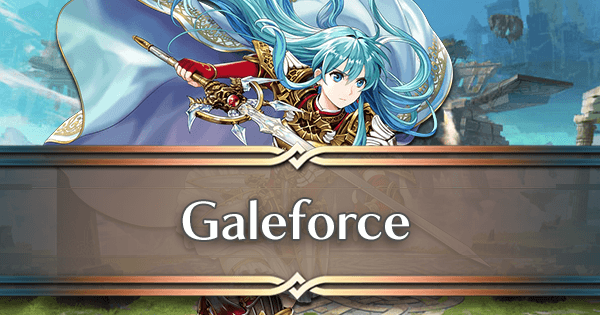
The complete opposite of the enemy phase strategy; the objective of this strategy is to finish the battle on the player phase by taking out as many units on the map as possible by using Galeforce. This usually involves having multiple Galeforce units in your team to ensure that there are enough attacking units to potentially end the battle in a single player phase.
There are usually 3 ways of playing a Galeforce strategy:
- Exploiting Wings of Mercy; your first Galeforce unit should be below the HP threshold when it activates Galeforce. This allows reinforcements to come in to either activate more Galeforce, or clean up the opponent. This is usually used by Infantry Galeforce units
- Hit and Run; activate Galeforce in a single battle and hopefully kill the opponent. After that try to escape from the opponent's threat range. Cavalry Galeforce units are the most suitable for this.
- Tank the survivors. Take out the most problematic units on the opponent team, and tank the remaining due the opponent not having as much firepower. This is usually used by Armored Galeforce units which usually has Bold Fighter.
Dancers are rather commonly used in strategies, specifically the melee ones as they could also potentially activate Galeforce if the player has a good set-up. Infantry Dancers could also use exploit Infantry Pulse to ensure that they can get Galeforce as soon as possible.
A Galeforce Cavalier is also one of the most suitable to run a suicide strategy; rushing into the opponent team and killing 2 units before getting killed. This could also be a valid strategy as it could potentially break the formation of the defender, and the biggest threats can also be removed before they causes any problems.
Potential Issues:
- Could be difficult to perform depending on trap locations.
- Requires a lot of practice to execute the strategy perfectly with no casualties.
- Very sensitive to skills that inhibit charges, such as Guard, Special Fighter. Pulse Smoke also completely counters the strategy.
Galeforce Unit Examples
Vantage
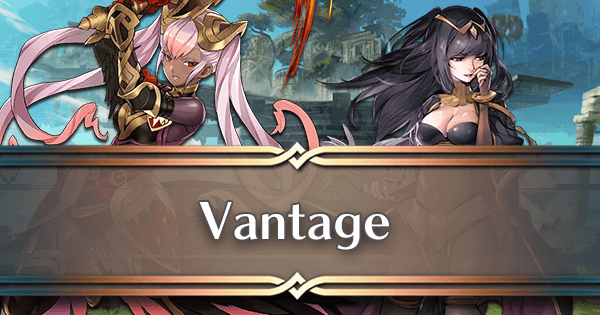
In the early days of the game, Close Counter / Distant Counter Vantage is a rather common strategy that was used in Arena. This strategy is somewhat revitalized in Aether Raids, where the objective of the strategy is to take out the most prominent threat in the player phase, and use Vantage to clean up the rest of the team by ideally defeating them in a single hit.
Vantage units are mostly ranged units, as they are able to reach units that are the most problematic. Units that negates counterattacks are the highest priority to take out, as repeated dancing and attacking without retaliation ruins Vantage as a whole. Skills that negates attack order are also high in priority if they are able to take the said Vantage unit out in a single hit.
The choice of a Vantage unit is relatively straightforward; find a unit that could likely take out the opponent in a single attack. There are situational ones that works on certain defensive team archetypes, such as archers for flying units, however the most general ones usually have ways to deal a lot of damage in a single hit. This includes weapons that gains damage from buffs (Blade Tomes) or debuffs (Broadleaf Fan, Spy's Dagger).
Another method is spreading out-of-combat damage that could potentially allow for easier kills in the enemy phase. The most prominent way of doing so is using Pain+ on healers (by extension, Jaffar’s Deathly Dagger). Such strategies will need to be wary of the Healing Tower, or any other possible source of healing (such as Healers and Heron Wing).
Melee units that are capable of taking units out in a single counter could also be considered. However, these units could have problems accessing the back line, which could be problematic if the most threatening unit is at the back.
Potential Issues:
- Vantage strategies are weak to skills that negates attack order. One of them is a Sacred Seal, which is very easy to obtain (Hardy Bearing).
- Skills that negates counterattacks avoids Vantage as well. This includes Dazzling Staff, Firesweep, Windsweep and Watersweep.
- Vantage strategies are more likely to miss Aether Structures, as sometimes it could be difficult to leave a unit alive without endangering the said Vantage unit.
Vantage Unit Examples
Sacrifice
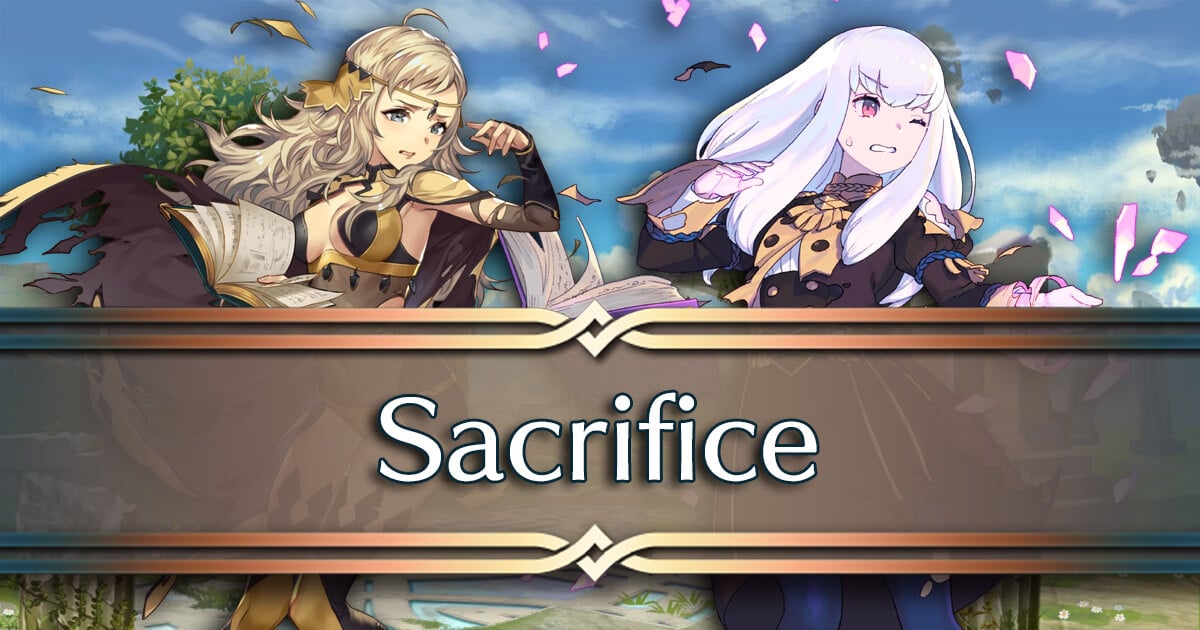
Not to be mistaken with the skill, sacrifice-based (or suicide-based) strategies involves the attacker fielding a unit with the sole intention of taking as many units out as possible without care about its survival. The focus of the remaining units would then be to clean-up after the sacrificial unit gets taken out. The most common sacrifice-based strategy would run a Galeforce unit (similar to a Galeforce strategy) or a powerful ranged unit, and a clean-up ranged unit. This is usually coupled with dancers to increase the chances of a successful clean-up. This strategy only works if you field a bonus offensive Mythic in your team when attacking.
Potential Issues:
- You are no longer allowed to lose a single unit after you sacrificed a unit to obtain the maximum score.
- Depending on the frontline used, the sacrifice might be unable to take the opponent team out, to begin with.
- At the mercy of the opponent; depending on the traps, terrains, and team layout.
Sacrifice Unit Examples
Offensive Structures

Other than the team layout, a player also has the choice of bringing in offensive structures when attacking. The structures will be occupying the very last row, and is destructible by your opponents if they somehow reaches the structures. The last row could also be occupied by units if there are no structures in the spot.
The last point in particular is very important, as it meant that sometimes less is more; you might have more mileage running lesser structures as it provides more space for your units to maneuver.
Highest Priority
Escape Ladder
Always. Go. For. This. First.
This structure provides a re-do for the player should he be dissatisfied with the outcome of the battle, or just outright lost the battle. The Escape Ladder provides charges dependent on level to allow players to re-do their battles. This is probably the most important structure to go for, so do spend some of the Aether Stones upgrading it as soon as possible.
High Priority
Bolt Tower
The Bolt Tower deals damage in the affected zone depending on level, starting at 10 from level 1 and increases by 5 every additional level. The affected zone consist of the column that the building is placed along with the left and right adjacent columns.
The versatility of the Bolt Tower makes it one of the more desirable offensive structures to be considered. It is highly recommended to consider Bolt Tower as your first priority after the Escape Ladder. Here are some instances which Bolt Tower could be helpful:
- For Galeforce strategies, lowers the health below Guard threshold to allow for accelerated charges for Galeforce.
- For Vantage strategies, puts the opponent health low enough to ensure that taking the opponent out in a single hit is more likely.
- For enemy phase strategies, potentially reduce the opponent’s damage due to not taking the opponent’s follow-up after taking the opponent out in a single hit.
Medium Priority
Tactics Room
The Tactics Room limits ranged units to 1 movement if their HP is below a certain threshold and within the affected zone (column of the building). The HP Threshold starts at 40 at level 1, and increases by 5 every level. The Tactics Room has the potential to be make an impact even at a low level. This is because ranged units usually have lesser stats to go around, which makes it more likely to get affected by Tactics Room. The impact could be further felt if the one affected is a Cavalry ranged unit by reducing the said unit by 2 movement.
However, this building is also a situational building, as it could also have no impact if either the health threshold is not met, or there are no ranged units to begin with. Nevertheless, the potential impact of this structure meant that this could be a good building to upgrade if the player prefers it.
Panic Manor
Similar to the Bolt Tower in terms of effective range (column and its adjacent columns), this structure inflicts Panic to units in the debuff range if the health fall below a certain HP threshold. Unlike Tactic Room, this applies for all units, be it ranged or melee units. The HP threshold starts from 40, and increases by 5 every level.
Reversing buffs to debuffs is an extremely powerful mechanic that will definitely be useful for the aggressor. At lower tiers, the likely trend of utilizing field buffs meant that Panic Manor will be helpful in terms of neutering the opponent. However, it is worth noting that higher tiers, more experienced players are wary of Panic effects, and choose not to have any buffs at all. However, as Legendary Azura is very common, and Prayer Wheel leverages on field buffs, even if it is only for that one unit, Panic Manor still sees the occasional impact.
Healing Tower
Unlike many other buildings, the Healing Tower has a vertical range; it heals health based on the structure level that is within 2 columns and 2 rows away from the structure. This scales from 10HP in level 1, and increases by 5 in every additional level. The vertical limitations on the healing tower meant that this is mainly used for use in the enemy phase, where players could ideally bait while within the range of Healing Tower, and heal during the next turn. Furthermore, this also helps with dealing with opponents that deals damage on specific turns, such as Fallen Takumi and more notably, Duma (which is a defensive Mythic).
However, most of the time the baiting spot closer to the healing tower might also be the most dangerous, and it might be better sometimes to bait from a different spot in a different row. This meant that for that specific circumstances, the healing tower is not very helpful. Nevertheless, Healing Tower is very helpful for players who have teams that are predominantly enemy phase focused.
Duo's Indulgence
If you have a Duo Hero on your offensive set-up, it is highly recommended to consider using Duo's Indulgence. While the structure does not allow you to use a Duo Skill twice per Duo Hero in a single turn, having 2 charges of Duo Skill is still immensely helpful as it enables some strategic flexibility in your Duo Skill usage.
However, if you do not have Duo Hero or not considering using one at all, this building is automatically relegated to a lower priority.
Low Priority
Bright / Dark Shrine
The shrines works similarly to a Chill skill; it targets the unit with the highest cumulative total for attack / speed and defense / resistance for Bright and Dark Shrine respectively. The shrines are rather situational at best in offense; while their debuffs are independent of the structure’s location, it could only debuff a single unit most of the time, and the defense could have some relative control in terms of who gets debuffed by the shrines.
Catapult
Catapult destroys structures (excluding ornaments) that are either the same level or lower in a straight column. The impact of the catapult could be huge by either breaking the defense’s key structures, or open a path that was previously not possible. It could also do absolutely nothing if there are no destructible structures in the same column. It is possible to examine the key trends of the structure locations in defense teams and plan accordingly, however by the time a player is capable of doing so, they should have more than enough Aether Stones to experiment with.
Schools
If one is talking about situational, there is no more situational buildings than the schools; they provide a debuff to all stats of a certain movement type within the buildings column and its adjacent columns. The effect is very straightforward, so the decision of upgrading these structures is also simple; if you struggle with a certain movement type, consider the schools. It is also worth noting that schools are cheaper to upgrade compared to other structures.
Conclusion
The above discusses some of the common successful strategies that could be used in Aether Raids Offense. While the list is not meant to be exhaustive, it gives a good idea on what it takes to create a successful strategy.
The most ideal scenario would be to have a myriad of strategy available. Each player is allowed to bring up to 5 teams for each mythic season, so utilizing your team slots to your advantage is ideal to ensure that you are covered for all the teams. Ensuring that each team is able to cover for each other’s weaknesses is imperative to succeed in Aether Raids Offense.
As for structures, Escape Ladder should always be the very first priority, with Bolt Tower following suit if a player want to invest in offense. After which, it is up to the player’s preference to determine which structure they might want to use.

